Homepage / News Details
Some problems in calcium hypochlorite storage
- Categroy:News
- Author:
- Origin:
- Release Time:2022-11-30 15:02
- Views:
【Summary】(1) Ignition and explosion characteristics and fire protection Combustibility: combustibility Grade of construction fire risk: B Flash point (° C) : Meaningless Spontaneous combustion temperature (℃) : meaningless Lower explosive limit (V%) : Meaningless Upper explosion limit (V%) : Meaningless
Some problems in calcium hypochlorite storage
【Summary】(1) Ignition and explosion characteristics and fire protection
Combustibility: combustibility
Grade of construction fire risk: B
Flash point (° C) : Meaningless
Spontaneous combustion temperature (℃) : meaningless
Lower explosive limit (V%) : Meaningless
Upper explosion limit (V%) : Meaningless
- Categroy:News
- Author:
- Origin:
- Release Time:2022-11-30 15:02
- Views:

(1) Ignition and explosion characteristics and fire protection
Combustibility: combustibility
Grade of construction fire risk: B
Flash point (° C) : Meaningless
Spontaneous combustion temperature (℃) : meaningless
Lower explosive limit (V%) : Meaningless
Upper explosion limit (V%) : Meaningless
Hazardous characteristics: Exposure to organic matter may cause burning hazard. Explosion may occur when heated sharply. Can with concentrated sulfuric acid, fuming nitric acid. React violently, even explode. Strong oxidizing agent. Decomposition occurs when exposed to heat or light [decomposition occurs at 100℃].
Fire extinguishing method: mist water, sand. It fuels the fire. If the substance or contaminated fluid enters the waterway, notify downstream users with potential water contamination, and notify local health and fire officials and pollution control authorities.
(2) Precautions for storage and transportation
Precautions for storage and transportation: Store in a cool and ventilated warehouse. Keep away from fire and heat. Protect from direct sunlight. Keep the container airtight. It should be stored separately from inflammable and combustible materials and acids. Avoid mixed storage and transportation. Should not be large or long lasting. Load and unload lightly during handling to prevent damage to packaging and containers. Do not shock, impact or friction.
(3) Emergency treatment of leakage
Leak disposal: Isolate the contaminated area of the leak and set warning signs around it. Emergency personnel are advised to wear gas masks and chemical protective suits. Do not make the leakage and combustible substances (wood, paper, oil, etc.) contact, do not directly contact the leakage, wash with a lot of water, diluted water into the waste water system or carefully sweep up, add water (3%), with sulfuric acid to adjust the pH value to 2, then by
Gradually add excess sodium bisulfite and discard after reaction. Such as a large amount of leakage, collection and recycling or harmless disposal after waste.
Releate News

Time of issue : 2024-05-08 13:15:35

Time of issue : 2024-04-29 13:33:08

Time of issue : 2024-04-22 08:56:03
CONTACT US
PRODUCTS
CALCIUM HYPOCHLORITE
TCCA
SDIC
BCDMH
FEEDBACK
© 1999-2018 北京网站建设有限公司 Copyright © 2012-2022 All Rights Reserved Powered by www.300.cn 冀ICP备12012949号 津公网安备 12010302002173号 Seo tag

